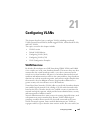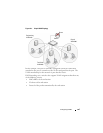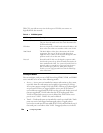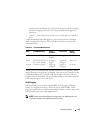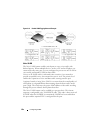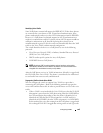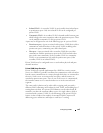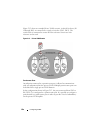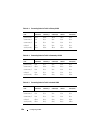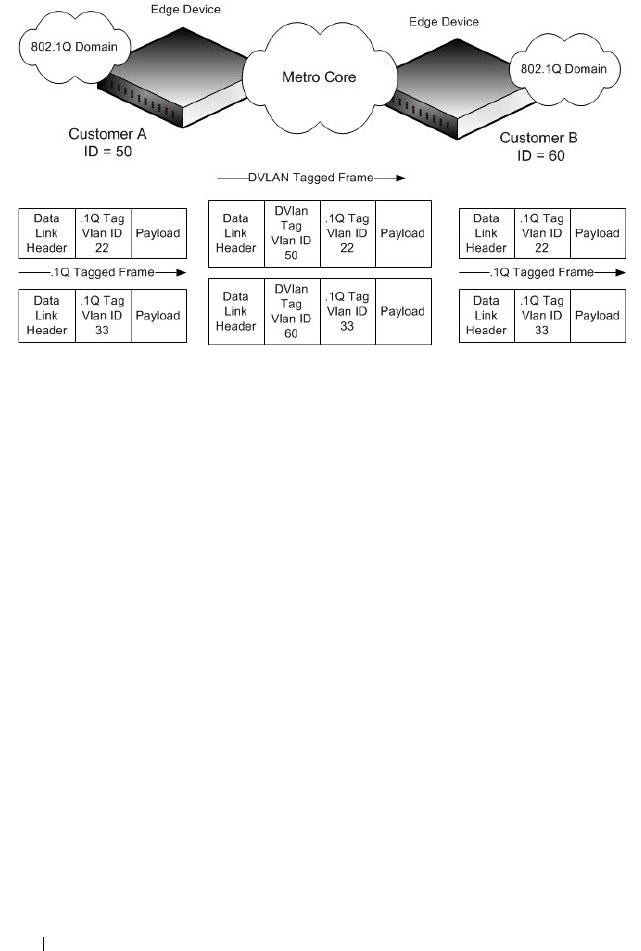
652 Configuring VLANs
Figure 21-2. Double VLAN Tagging Network Example
Voice VLAN
The Voice VLAN feature enables switch ports to carry voice traffic with
defined priority. When multiple devices, such as a PC and an IP phone, are
connected to the same port, you can configure the port to use one VLAN for
voice traffic and another VLAN for data traffic.
Voice over IP (VoIP) traffic is inherently time-sensitive: for a network to
provide acceptable service, the transmission rate is vital. The priority level
enables the separation of voice and data traffic coming onto the port.
A primary benefit of using Voice VLAN is to ensure that the sound quality of
an IP phone is safeguarded from deteriorating when the data traffic on the
port is high. The switch uses the source MAC address of the traffic traveling
through the port to identify the IP phone data flow.
The Voice VLAN feature can be enabled on a per-port basis. This feature
supports a configurable voice VLAN DSCP value. This value is later retrieved
by LLDP when the LLDPDU is transmitted, if LLDP has been enabled on
the port and the required TLV is configured for the port.




